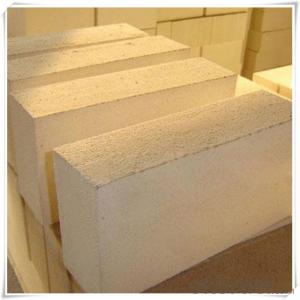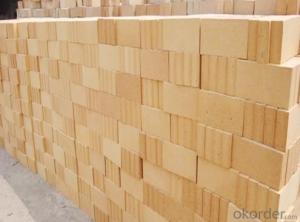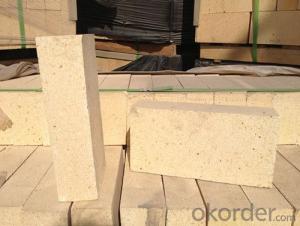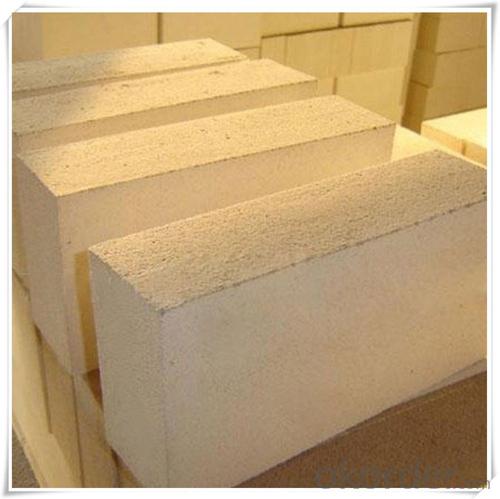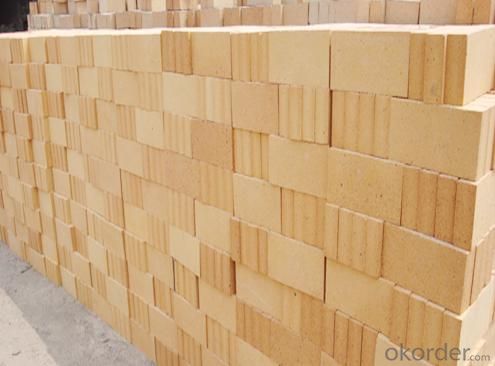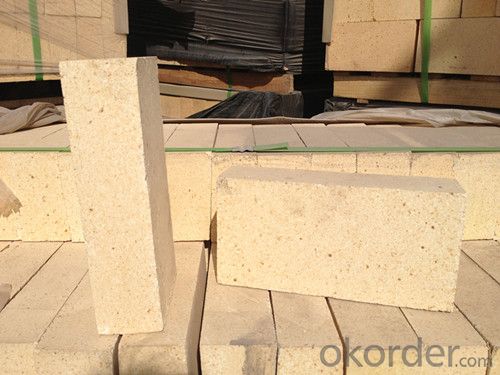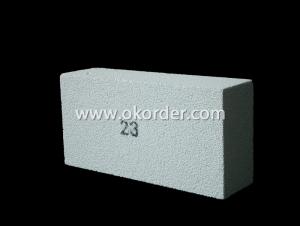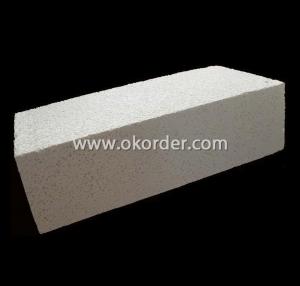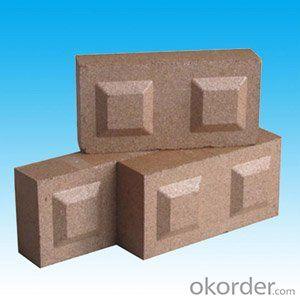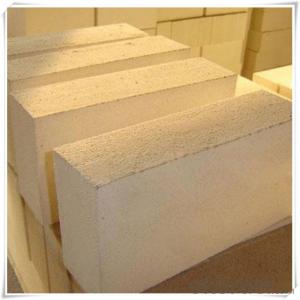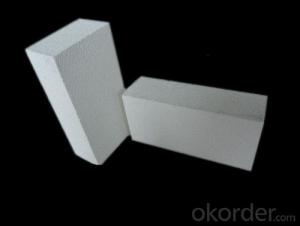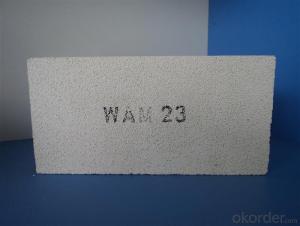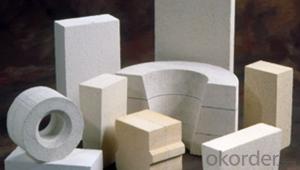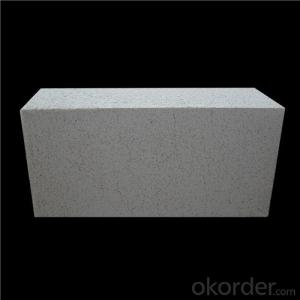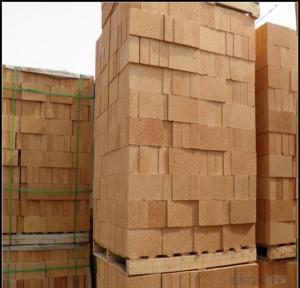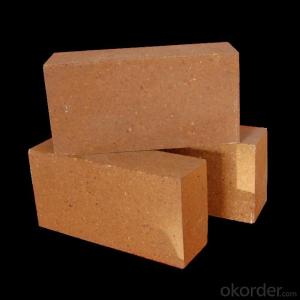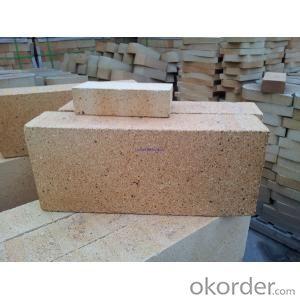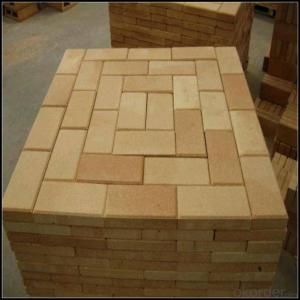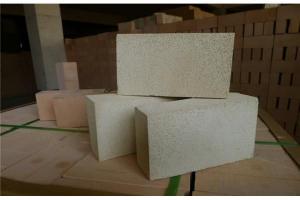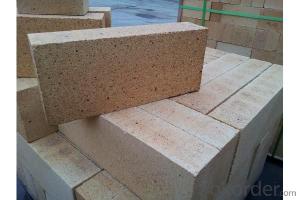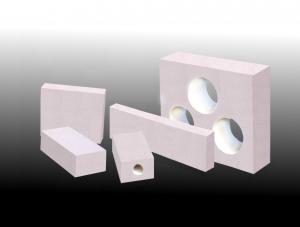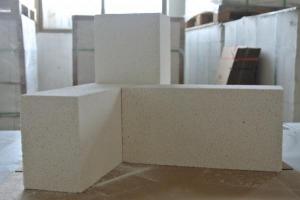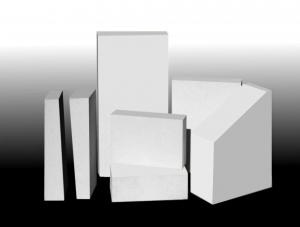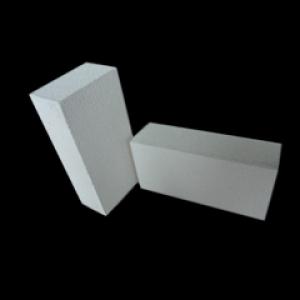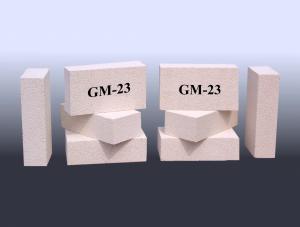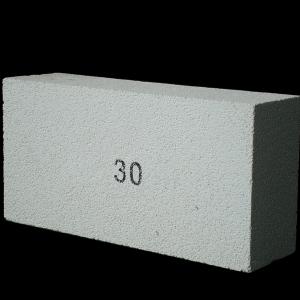Insulating Fire Brick for Steel, Cement, and Glass Industries
- Loading Port:
- Tianjin
- Payment Terms:
- TT OR LC
- Min Order Qty:
- 30 m.t.
- Supply Capability:
- 10000 m.t./month
OKorder Service Pledge
OKorder Financial Service
You Might Also Like
CNBM conforms strictly to the requirements of ISO 9000 quality control system during the production. MSDS is also available if you want. The thermal insulation fire clay brick meet with the requirements of ASTM & JIS standards. So pls stay cool with our quality.
Brief discription for Alumina Fire Brick
CNBM Alumina Fire Brick are classified according to alumina content ranging from 48% to 90%.
CNBM Alumina Fire Brick are commonly used in blast furnace, hot blast furnace, the roof of electric furnace, teeming ladle, rotary kiln, regenerator, etc.
Brief features for Alumina Fire Brick
◆Low thermal conductivity
◆Excellent acid and base slagging resistance
◆High refractoriness
◆Excellent thermal shock resistance
◆Excellent mechanical strength
◆Good spalling resistance and wear resistance.
◆Good corrosion resistance.
◆High-temperature creep rate is quite low.
◆Good volume stability at high temperature.
◆Low bulk density, low thermal conductivity, good thermal insulation performance.
Technical data for high aluminia bricks
ITEM | UAL48 | UAL55 | UAL65 | UAL75 | UAL80 | UAL85 | ALP80 |
Refractoriness, ℃ | 1750 | 1770 | 1790 | 1790 | 1810 | 1810 | 1810 |
Apparent Porosity,% | 22 | 22 | 23 | 23 | 20 | 20 | 18 |
C.C.S, Mpa | 39 | 44 | 49 | 53 | 55 | 60 | 100 |
Refractories Under Load (0.2Mpa),℃ | 1420 | 1470 | 1500 | 1520 | 1500 | 1520 | 1550 |
Reheating Linear Change,% | 1450℃x2h 0.1~-0.4 | 1500℃x2h 0.1~-0.4 | 1500℃x2h 0.1~-0.4 | 1500℃x2h 0.1~-0.4 | 1550℃x2h -0.5~+0.5 | 1550℃x2h -0.5~+0.5 | 1550℃x2h -0.5~+0.5 |
Al2O3 Content , % | 48 | 55 | 65 | 75 | 80 | 85 | 82 |
Why us
Professional fire brick manufacturer. We have being specialized in producing refractory fireclay brick for more than 40 years so that we can guarantee a stable quality.
Guaranteed quality. Our production process conforms strictly to the requirements of ISO9000 quality management system. Quality inspection is carried out in every links of our production. SGS third party inspection is available.
Sound after sales service. We provide sound after sales service. We provide 24 hours’ consultation service. We are ready to answer your consultations at any time.
- Q: Can insulating fire bricks be used in the construction of industrial chimneys?
- Indeed, insulating fire bricks are capable of being utilized in the construction of industrial chimneys. These bricks are meticulously crafted with exceptional thermal insulation properties, rendering them perfectly suited for situations where precise temperature management is paramount. Given that industrial chimneys endure elevated temperatures and heat transmission, insulating fire bricks prove invaluable in mitigating heat dissipation or acquisition, thereby enhancing energy efficiency and minimizing the likelihood of structural harm. Furthermore, these bricks exhibit commendable resilience against thermal shock, enabling them to endure the rigorous conditions commonly encountered in industrial environments. Consequently, insulating fire bricks emerge as a fitting choice for constructing industrial chimneys.
- Q: What is the difference between insulating fire bricks and regular fire bricks?
- Insulating fire bricks and regular fire bricks have different thermal properties and applications. Insulating fire bricks are specifically designed for their excellent insulation capabilities, making them perfect for situations where heat retention is crucial. These bricks have low thermal conductivity, which allows them to minimize heat transfer and maintain the desired temperature in enclosed spaces. As a result, they are commonly used in industries such as iron and steel, ceramics, glass, and petrochemicals, where efficient containment of high temperatures is necessary. On the other hand, regular fire bricks, also known as refractory bricks, focus more on enduring extreme heat and maintaining structural integrity in high-temperature environments. They are typically made from dense materials like clay or silica, which provide excellent resistance to heat, chemicals, and mechanical stress. Regular fire bricks are widely utilized in fireplaces, wood-burning stoves, kilns, and other heating appliances, as their dense composition ensures durability and resistance to thermal shock. To summarize, insulating fire bricks prioritize heat insulation, while regular fire bricks prioritize heat resistance and structural stability. The choice between the two depends on the specific requirements of the application. Insulating fire bricks are ideal for industries that require heat retention, while regular fire bricks are suitable for high-temperature environments where durability and resilience are crucial.
- Q: Are insulating fire bricks suitable for use in oil refineries?
- Yes, insulating fire bricks are suitable for use in oil refineries. They possess excellent thermal insulation properties, high resistance to thermal shock, and can withstand high temperatures. These qualities make them ideal for lining furnaces, boilers, and other equipment used in the refining process, helping to conserve energy and maintain stable operating conditions.
- Q: Can insulating fire bricks be used in the construction of brick ovens?
- Yes, insulating fire bricks can be used in the construction of brick ovens. Insulating fire bricks are specifically designed to have high thermal insulation properties, making them ideal for applications where heat retention is crucial, such as in brick ovens. These bricks are made from lightweight refractory materials and have a lower density compared to regular clay bricks, which helps to minimize heat loss and improve energy efficiency. When building a brick oven, it is important to consider the insulation layer that will help retain heat and distribute it evenly throughout the oven. Insulating fire bricks can be used to create this insulation layer, which is typically placed between the inner cooking chamber and the outer layer of the oven. These bricks will help to minimize heat transfer to the outer layer, preventing excessive heat loss and ensuring that the oven reaches and maintains the desired high temperatures for baking or cooking. In addition to their excellent thermal insulation properties, insulating fire bricks also have high resistance to thermal shock, meaning they can withstand rapid temperature changes without cracking or breaking. This is particularly important in brick ovens, as they often experience significant temperature variations during the baking process. Overall, insulating fire bricks are a suitable and recommended choice for the construction of brick ovens due to their thermal insulation properties, lightweight nature, and resistance to thermal shock. Using these bricks will help to create a well-insulated and efficient oven that can achieve and maintain high temperatures for optimal baking or cooking results.
- Q: Can insulating fire bricks be used in the construction of hot air generators?
- Yes, insulating fire bricks can be used in the construction of hot air generators. Insulating fire bricks are designed to withstand high temperatures and provide excellent thermal insulation. Their ability to retain heat makes them ideal for use in hot air generators, as they help to minimize heat loss and improve energy efficiency.
- Q: Can insulating fire bricks be used for insulation in heat recovery systems?
- Indeed, insulating fire bricks have the capability to serve as insulation within heat recovery systems. These bricks are specially crafted to endure elevated temperatures and deliver efficient thermal insulation. By possessing low thermal conductivity, they possess the ability to reduce heat dissipation and enhance heat recovery within a system. Consequently, they are frequently implemented in diverse industrial settings, including kilns, furnaces, and ovens, where temperature regulation and energy efficiency are paramount. Therefore, these bricks present a viable option for insulating heat recovery systems, facilitating the optimization of waste heat recovery and utilization.
- Q: Are insulating fire bricks resistant to metal penetration?
- Insulating fire bricks are generally resistant to metal penetration. These bricks are made from refractory materials, which have high melting points and are designed to withstand high temperatures. They are often used in applications where they are exposed to extreme heat, such as in furnaces and kilns. Insulating fire bricks have low thermal conductivity, meaning they are good at preventing heat transfer. This property helps to keep the outer surface of the bricks cool, even when the interior is exposed to intense heat. As a result, these bricks can resist the penetration of molten metal. However, it is important to note that the resistance of insulating fire bricks to metal penetration can vary depending on the specific composition and quality of the bricks. Some lower-grade bricks may not provide the same level of resistance as higher-quality ones. Additionally, the duration and intensity of the heat exposure can also affect the bricks' resistance. In conclusion, while insulating fire bricks are generally resistant to metal penetration, it is crucial to consider the specific characteristics and quality of the bricks being used, as well as the conditions in which they are exposed to heat.
- Q: Are insulating fire bricks resistant to chemicals?
- Insulating fire bricks, in general, exhibit resistance to chemicals. They are specifically engineered to endure extreme temperatures and possess minimal thermal conductivity, making them a prime selection for chemical-related applications. These bricks are typically composed of ceramic materials, such as alumina, renowned for their exceptional chemical resistance properties. Nonetheless, it is crucial to recognize that the extent of chemical resistance can fluctuate based on the specific variant of insulating fire brick and the chemicals involved. Certain chemicals, particularly those highly corrosive or reactive in nature, may still inflict harm or deterioration on the bricks over time. Thus, seeking detailed information on the chemical resistance capabilities of specific insulating fire bricks from the manufacturer or supplier is highly recommended.
- Q: Can insulating fire bricks be used as a thermal barrier?
- Yes, insulating fire bricks can be used as a thermal barrier. These bricks have high thermal resistance and low thermal conductivity, making them effective in reducing heat transfer. They are commonly used in applications where thermal insulation is required, such as in furnaces, kilns, and fireplaces, to prevent heat loss and protect surrounding areas from excessive heat.
- Q: Do insulating fire bricks require any curing before use?
- Yes, insulating fire bricks do require curing before use. Curing is the process of drying out and hardening the bricks to ensure they can withstand high temperatures without cracking or breaking. This involves gradually increasing the temperature over a period of time, typically starting with a low heat and gradually increasing it over several hours. Curing helps to remove any moisture or volatile compounds that may be present in the bricks, which could otherwise cause them to crack or explode when exposed to high temperatures. It is important to follow the manufacturer's instructions for curing the fire bricks to ensure their proper installation and longevity.
Send your message to us
Insulating Fire Brick for Steel, Cement, and Glass Industries
- Loading Port:
- Tianjin
- Payment Terms:
- TT OR LC
- Min Order Qty:
- 30 m.t.
- Supply Capability:
- 10000 m.t./month
OKorder Service Pledge
OKorder Financial Service
Similar products
Hot products
Hot Searches
Related keywords
